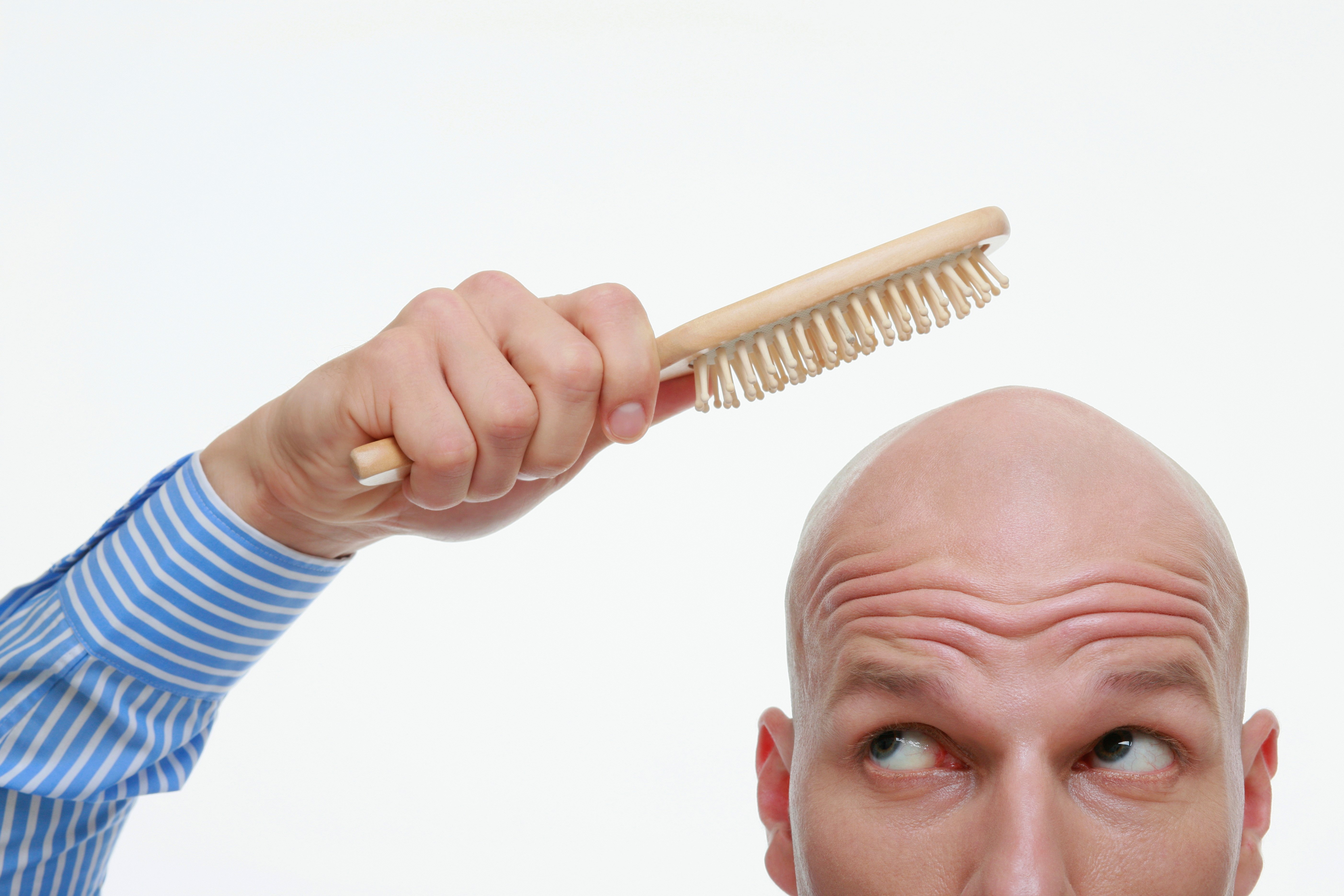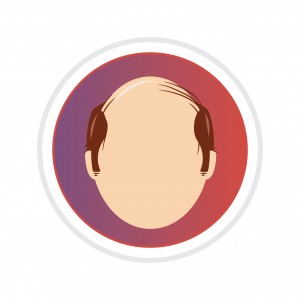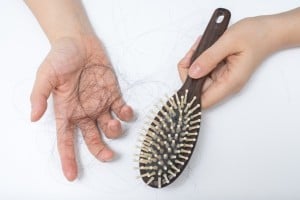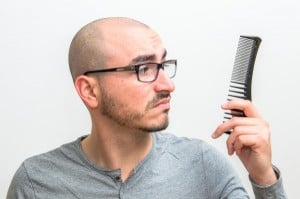How Does Propecia®/ Finasteride Work And Does It Help?

The tell-tale signs
In the shower one morning you notice a few more hairs blocking the plughole than usual. You look in the mirror and notice your forehead seems to have widened upwards in the middle towards your hairline and your hairline seems to have moved a few millilitres back in the direction of the middle of your head and your temples. You stand with your back to the large mirror and angle the smaller mirror in your hand to check out the top of your head. Reflecting back at you is a shiny scalp peeping through the thinly-spread hairs.
Yes, it is looking thinner up there. And when you comb your hair, there are lot more hairs tangled in the teeth of the comb than you normally notice. It is happening! That which you wished you would not inherit from your parents. Yes, it is a receding hairline. You hope it is a bad dream that you will wake up from shortly. Only, it is not a dream.
So, do you panic and start strategising the best way to make a comb-over look natural? Do you talk to your hairdresser about the best haircut to hide approaching baldness? Perhaps, even consider getting fitted for a hairpiece? Do you consider shaving all your hair off and going for the trendy shaved head look? Or, if that doesn’t appeal, and you have the means to pay, do you think about spending thousands to have painful hair transplants?
You could do any of these things, depending on your personal preference. But, there is another option that may be more appealing and is pain-free. There is a treatment that you can get from your doctor to help restore your crowning glory. It is called Propecia® or Finasteride. Before we discuss how Propecia®/Finasteride works and whether it is effective, let us find out what it is, and what it does and does not treat.
What is Propecia®/Finasteride?
Propecia®/Finasteride is a medicine used to treat male pattern hair loss or baldness in men. It cannot be used to treat baldness in women. Propecia® is the name for the branded version of the medicine used to treat male pattern baldness and contains the active ingredient Finasteride. The branded version is made by Merck Sharp & Dohme, the company that originally researched and brought the medicine to market. Non-branded or generic versions of Finasteride, made by generic manufacturers, are also available.
Click HERE to View Finasteride Prices > >
Finasteride is also used to treat benign prostatic hyperplasia.2 However, when used to treat this condition, it is taken at a higher dose than that used to treat male pattern hair loss. The branded version of the medicine for this indication also goes by a different name, Proscar®. It is important that you understand the difference between these two preparations and make sure that you have the right medicine for your condition.
What is male pattern hair loss?
‘Misery loves company’, so the saying goes. You may be comforted to know that you not alone. Male pattern hair loss, also sometimes referred to as androgenetic alopecia, is a type of alopecia or hair loss.3 It has a distinctive pattern, usually starting with a receding hairline, followed by thinning of the hair on the top of the head (crown) and temples. This results in a typical horseshoe shape around the back and sides of the head. Most men do not go completely bald, but it can happen in a few men.4
Why am I going bald?
Male pattern hair loss runs in families, i.e. it is hereditary from both parents. Therefore, you stand a good chance of experiencing the condition, if male relatives of either your mother or father also have it.
It is thought that male pattern baldness is linked to the male androgen hormone, testosterone.3 The problem is not that men with the condition have too much testosterone; testosterone levels in affected men are usually normal. Rather, the problem is that when testosterone is broken down by the enzyme 5-alpha reductase to dihydrotestosterone in the skin, the hair follicles in men who experience male pattern baldness become more sensitive to the dihydrotestosterone and shrink in size.4
Over time, the hairs become smaller and have less colour with each hair-growth cycle. These hairs fall out more easily and take longer to regrow, resulting in fewer hairs on the scalp.3,5 However, it not unusual for men who lose hair on their head to have plenty of hair on the rest of their bodies.3
How common is male pattern hair loss?
Male pattern hair loss is the most common type of hair loss and affects approximately 50% of all men by the age of 50 years. Hair loss normally begins in the late 20s or early 30s, with most men experiencing some hair loss by their late 30s.4
The frequency of male pattern hair loss varies between different ethnic groups. White men are four times more likely to experience it than Black men.3 It is least common in Asian men.5
How does Propecia®/Finasteride work?
Propecia®/Finasteride works by blocking the action of the enzyme 5-alpha-reductase, thus preventing the breakdown of testosterone to dihydrotestosterone.6 By blocking the production of dihydrotestosterone, Propecia®/Finasteride increases testosterone levels in the body.4 This, in turn, allows the hair follicles to return to their normal size and, ultimately, results in increased hair growth on the scalp.6 However, Propecia®/Finasteride does not increase the amount of hair on the rest of the body.6
Based on information gathered from clinical studies, it would appear that Propecia®/Finasteride can increase the number of hairs on the head (also referred to as hair count), as well as improve how men think about the appearance of their hair.4
Is Propecia®/Finasteride effective?
In clinical studies, men aged 18 to 41 years with mild to moderate male pattern hair loss who took Propecia®/Finasteride had an increase in scalp hair count and hair regrowth. This improvement started as early as 3 months after the start of treatment. In clinical studies that lasted up to 5 years, Propecia®/Finasteride continued to slow the loss of hair and stabilised hair loss compared to those men who did not take the treatment.1,7
What do I need to know about using Propecia®/Finasteride?
We will briefly discuss some things you need to know before you start taking Propecia®/Finasteride
However, this will not cover everything. Always read the patient information leaflet that comes with your tablets and speak to your doctor or pharmacist for further information and advice.
How do I get hold of Propecia®/Finasteride?
- You can only get Propecia®/Finasteride through a private prescription from your GP. It is not available on the NHS.
How do I take it?
- It is available as a 1 mg tablet. The recommended dose is one 1 mg tablet every day. You can take it with or without food.1 There is no evidence that a higher dose will result in quicker or greater hair growth. Therefore, you should not take more than the recommended dose.
Is there anyone who should not take it?
- Women and children under 18 years of age should not use Propecia®/Finasteride.1 Propecia®/Finasteride can cause birth defects in a male foetus if a woman handles it during pregnancy. Therefore, you must take care not to let any woman who is pregnant or who may become pregnant handle your tablets.1
- Men who are taking Proscar®/Finasteride 5 mg or any other 5α-reductase inhibitor for benign prostatic hyperplasia or any other condition should not take Propecia®/Finasteride.1
- People who are known to have a hypersensitivity reaction to Propecia®/Finasteride or any of the ingredients present in the tablets should not take it.1
What other effects should I look out for?
- In clinical studies with Propecia®/Finasteride, levels of the prostate-specific antigen (PSA) in blood serum decreased over time. Therefore, it is important to make sure that any healthcare professional that you are seeing knows that you are taking Propecia®/Finasteride. This will ensure that they interpret the results of this test accurately, taking into account that you are taking Propecia®/Finasteride.1
- Some men taking Propecia®/Finasteride have developed breast cancer. You should, therefore, tell your Doctor if you notice any changes in your breasts such as lumps, pain, an increase in the size of your breast (also called gynaecomastia) or discharge from the nipple.1
- Some men treated with Propecia®/Finasteride have experienced changes in mood such as depressed mood, depression and, less frequently, suicidal ideation. You should report any such symptoms to your doctor as soon as you notice them.1
- If you have been told that you have a hereditary form of lactose intolerance called galactose intolerance, the Lapp lactase deficiency or glucose-galactose malabsorption then you should not take this medicine.1
Are there any side effects?
- Most medicines will have some side effects. However, people will react differently to the same medicine. Therefore, not everyone will experience the same side effects and some people will not experience any side effects at all. You won’t know until you start taking the tablets.
- In clinical trials, side effects for Propecia®/Finasteride were uncommon. Reported side effects were usually mild and, generally, treatment did not need to be stopped.
- The most common side effects reported in ≥1 in 100 men who took Propecia®/Finasteride are: a loss of sex drive (libido) or erectile dysfunction (the inability to get or maintain an erection) and problems with ejaculation.1
- After the Propecia®/Finasteride was approved and began to be used widely in more men, other side effects were reported that had not shown up during the clinical trials. These include sexual dysfunction that did not improve after stopping treatment, and male breast cancer (see above).1
How soon after starting Propecia®/Finasteride) can I expect to see results?
There is some evidence to suggest that the earlier you start to take Propecia®/Finasteride after noticing the first signs of hair loss the better the results you will get.5 The medicine will not work as well once hair loss is established.5
It can take 3 to 6 months after you start taking Propecia®/Finasteride for the hair loss to show signs of stabilising.1 It is therefore important that you take the medicine regularly once a day as prescribed.1
How long can I take Propecia®/Finasteride?
Your doctor will want to keep monitoring how well the medicine is working to reverse your hair loss and will assess how long the treatment should continue. For most patients, the recommendation is to keep taking the medication continuously to maintain the hair regrowth.1
What happens when I stop taking Propecia®/Finasteride?
The effect of Propecia®/Finasteride on the hair loss will only last for as long as you keep taking the medicine. Once you stop taking Propecia®/Finasteride, the hair loss will start again by 6 months and return to the way it was at the time you started taking the medicine by 9 to 12 months.1
In conclusion…
You are, hopefully, now feeling more knowledgeable about how Propecia®/Finasteride works and how effective it is. Let us recap what we have learned.
Propecia®/Finasteride is a medicine used to treat male pattern hair loss. It is available as a branded product and as generic versions. Male pattern hair loss results in a receding hairline, thinning of hair on the crown and at the temples. This type of hair loss is common, experienced by 50% half of males by the time they reach 50 years of age.
Male pattern baldness is hereditary and thought to involve the androgen hormone testosterone, which is broken down to dihydrotestosterone in skin cells. In some men, due to the genes they can inherit from either parent, the hair follicles on their head become more sensitive to dihydrotestosterone, resulting in the hair loss.
Propecia®/Finasteride works by blocking the enzyme that converts testosterone to dihydrotestosterone and thereby reversing and preventing further hair loss. In clinical studies in men with mild to moderate hair loss, Propecia®/Finasteride was effective in increasing hair count and hair regrowth, as early as 3 months after starting treatment and the benefits continued up to 5 years.
Side effects of Propecia®/Finasteride are not common, but the most common, sexual dysfunction, may continue even after stopping treatment.
For best effect, Propecia®/Finasteride should be taken as soon as hair loss begins. It may take up 6 months after starting treatment to stabilise hair loss and the benefits start to reverse 6 months after stopping treatment. It is, therefore, important to take one tablet of 1 mg Propecia®/Finasteride every day as prescribed and to continue taking them to maintain hair growth.
Click HERE to View Finasteride Prices > >
References
- Merck Sharp & Dohme Ltd. Propecia® (Finasteride) 1 mg tablets. Summary of Product Characteristics. July 2017. https://www.medicines.org.uk/emc/medicine/3680. Accessed 10/12/2017.
- Merck Sharp & Dohme Ltd. Proscar® (Finasteride) 5mg film-coated tablets. Summary of Product Characteristics. September 2017. http://www.medicines.org.uk/EMC/medicine/1190. Accessed 10/12/2017.
- Harding M. Alopecia. info. 04 June 2015. https://patient.info/doctor/alopecia. Accessed 10/12/2017.
- Hair loss. NHS Choices. https://www.nhs.uk/conditions/hair-loss/. Accessed 10/12/2017.
- Alopecia, androgenetic -male. Definition. NICE Clinical Knowledge Summaries. June 2016. https://cks.nice.org.uk/alopecia-androgenetic-male#!topicsummary. Accessed 10/12/2017.
- Finasteride (By mouth). PubMed Health. https://www.ncbi.nlm.nih.gov/pubmedhealth/PMHT0010302/?report=details. Accessed 10/12/2017.
- Merck Sharp & Dohme Corp. Propecia® (Finasteride) tablets for oral use. Highlights of prescribing information. September 2013. https://www.merck.com/product/usa/pi_circulars/p/propecia/propecia_pi.pdf. Accessed 10/12/2017.
Assured Pharmacy is not liable for the currency or accuracy of the information contained in this blog post. For specific information about your personal medical condition, please contact our doctors or pharmacists for advice on [email protected].





